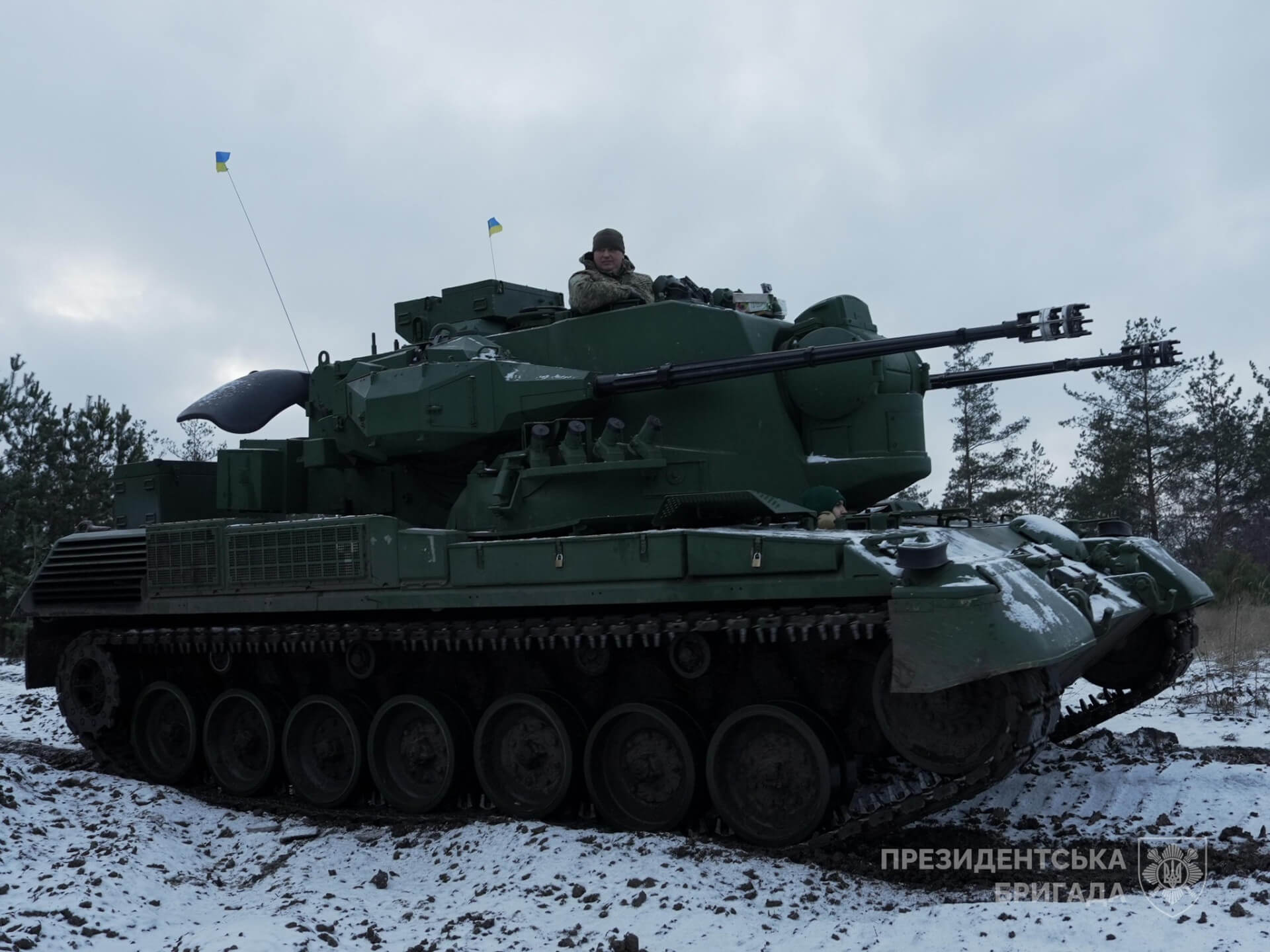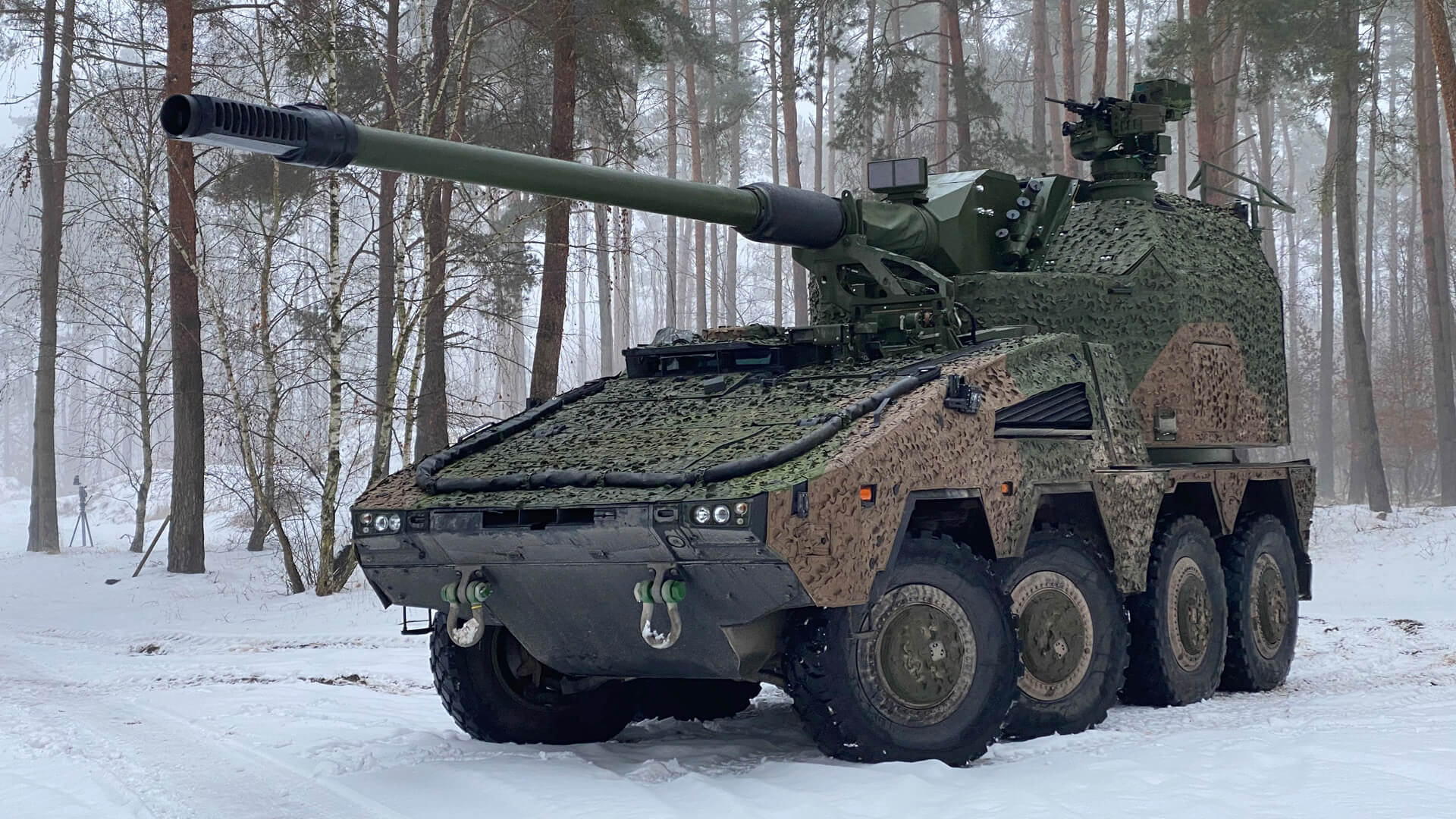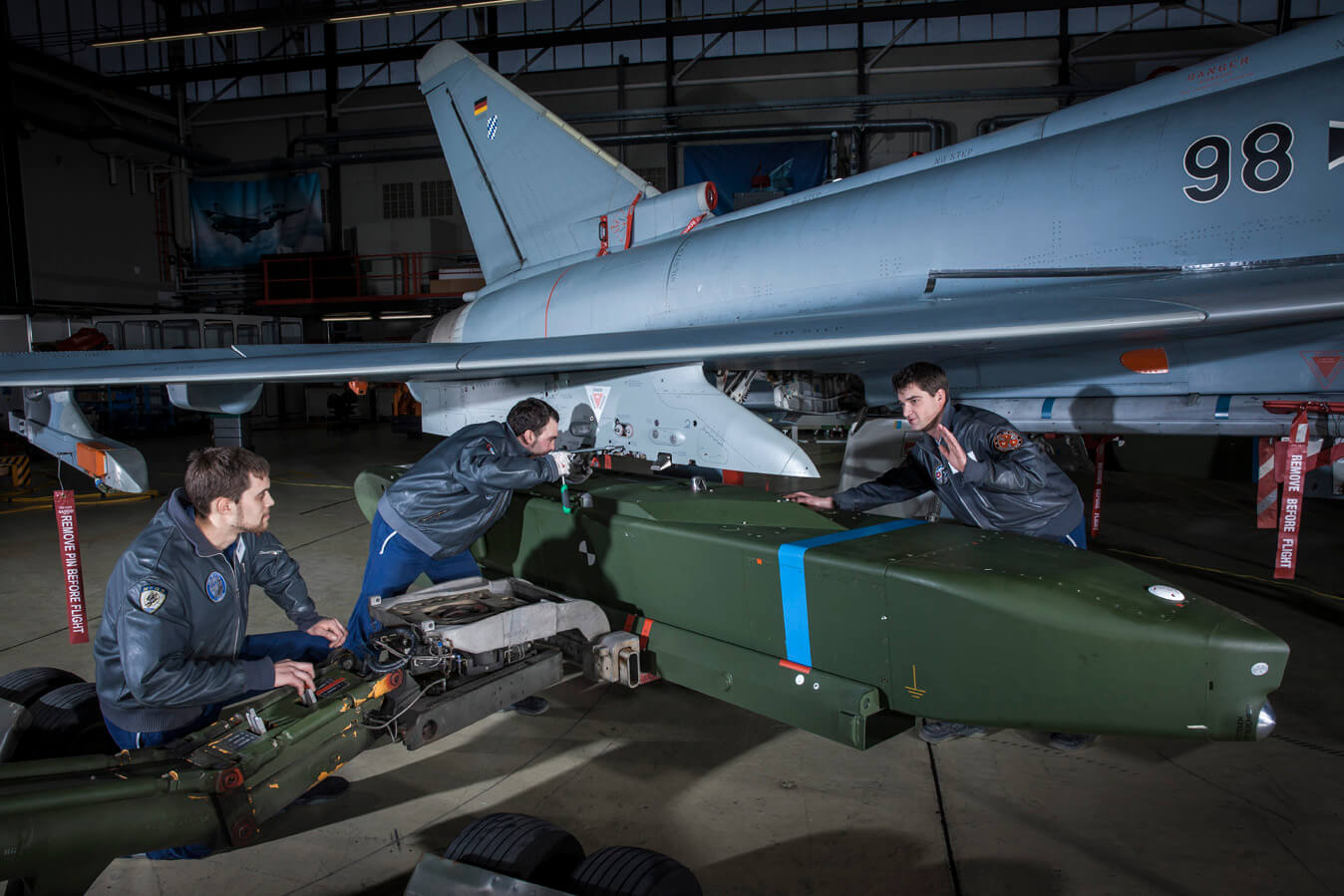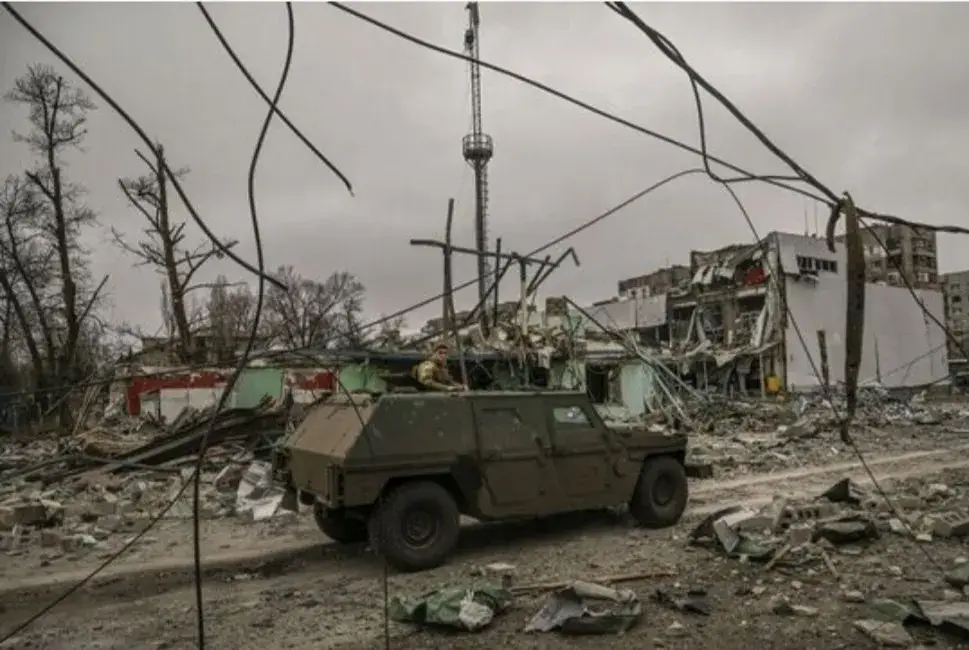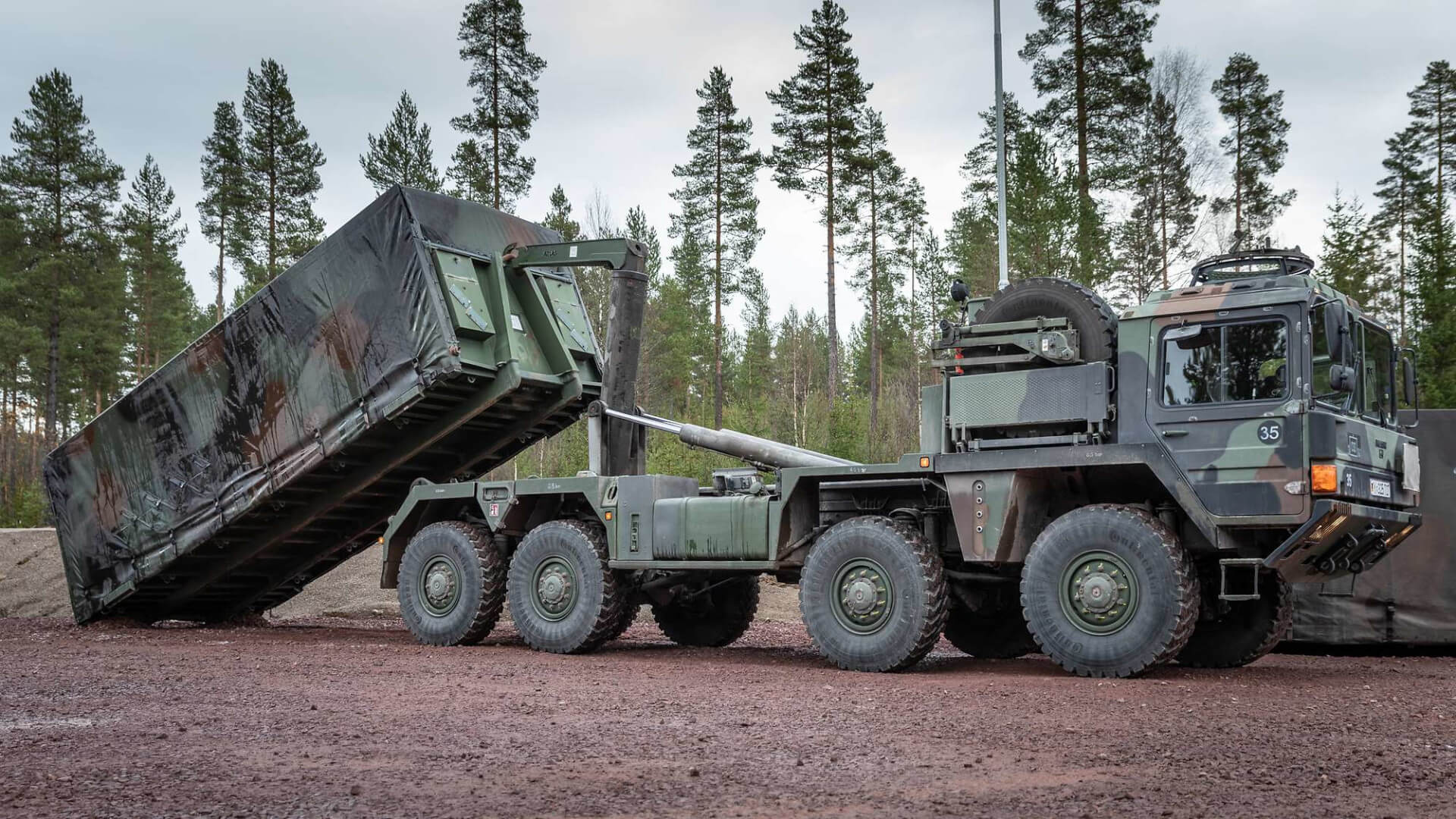Germany’s military assistance for Ukraine since the start of the full-scale invasion by Russia in 2022 has become quite diversified over the years.
In addition to the general bilateral assistance with military equipment which every country provides to Ukraine, there are specific well-known deals with other countries involving the exchange of military equipment.
In these, Germany finances modern equipment for a third country, while the latter hands over older Soviet equipment to Ukraine.
These deals, which have their pros and cons, are known to happen under the “Ringtausch programme”. A term which most of my readers should be familiar with, regardless of whether one views it positively or negatively.
But did you know that, in addition to the agreements summarized under the Ringtausch programme, there are other ones that ultimately meant additional deliveries for the Ukrainian army, but kept more or less secret for unknown reasons? Let’s dive into them!
The Slovakian S-300 delivery
When Russia began its full-scale invasion, its sheer superiority became apparent. Especially when it came to the protection of not only the military and its infrastructure, but also the civilian population against Russia’s regular massive airstrikes, Ukraine faced major problems.
Leaving aside the deliveries of the crucial MANPADS from various countries including Germany, it was Slovakia, among others, which delivered a more powerful air defence system to Ukraine very early in the form of an S-300PMU battery to improve the situation.
But what was Germany’s role in this? Even before the Slovakian delivery in April 2022, government officials said that a delivery would only take place if a replacement was obtained from partners to avoid a capability gap.
This is precisely the part that Germany has taken on in a leading role. Germany temporarily stationed two MIM-104 Patriot fire units together with an army company consisting of several hundred German soldiers in Slovakia to protect the Sliač Air Base. The Netherlands and the US also helped out with one MIM-104 Patriot fire unit each.

Interestingly, a spokesperson for the Ministry of Defence described this deal in July 2022 as part of the German Ringtausch programme, while for some reason unknown to me, it is no longer described that way in more recent publications.
While both the US and the Netherlands had already withdrawn their air defence from Slovakia at the beginning of 2023, the German systems and soldiers remained there at this time.
It was not until the NATO summit in Vilnius in July 2023, which Germany offered to protect with air defence, that the two fire units were withdrawn from Slovakia. By then, however, Germany had already offered a replacement.
The German and Slovakian Ministries of Defence had already agreed that Germany would donate two MANTIS air defence systems and five LÜR air surveillance radars to Slovakia by October 2023.
MANTIS is a cannon-based short-range air defence system very similar to the Skynex systems Germany pledged and donated to Ukraine. It is designed to protect field camps or other military or critical infrastructure and is very well suited to combat RAM projectiles or drones.
While the first radar units were delivered in August 2023, the remaining deliveries, including the air defence systems, followed within the next few weeks, thus completing the circle.
The IRIS-T SLM fire units with an Egyptian touch
Germany itself also pledged to supply modern air defence systems on a bilateral level relatively soon after the start of the Russian full-scale invasion. To be precise, it was the first country to pledge the delivery of western MRAD systems to Ukraine.
In this context, the pledge and delivery consisted of four IRIS-T SLM fire units, whose exceptionally high efficiency in successfully engaging targets like larger loitering munitions or cruise missiles is now known worldwide.
The biggest problem at that time as well as more or less today is that these specific air defence systems, unlike the MIM-104 Patriot which was first delivered a year later, were not operated by the German Bundeswehr.
Instead of almost immediately launching the training of Ukrainian soldiers on IRIS-T SLM, it first had to be produced, which of course takes some time. However, a solution was found here too.
The trained eye should have noticed by now that two of the five IRIS-T SLM fire units delivered so far have a special sand camouflage pattern, in contrast to the remaining three fire units, which were delivered in classic dark green.
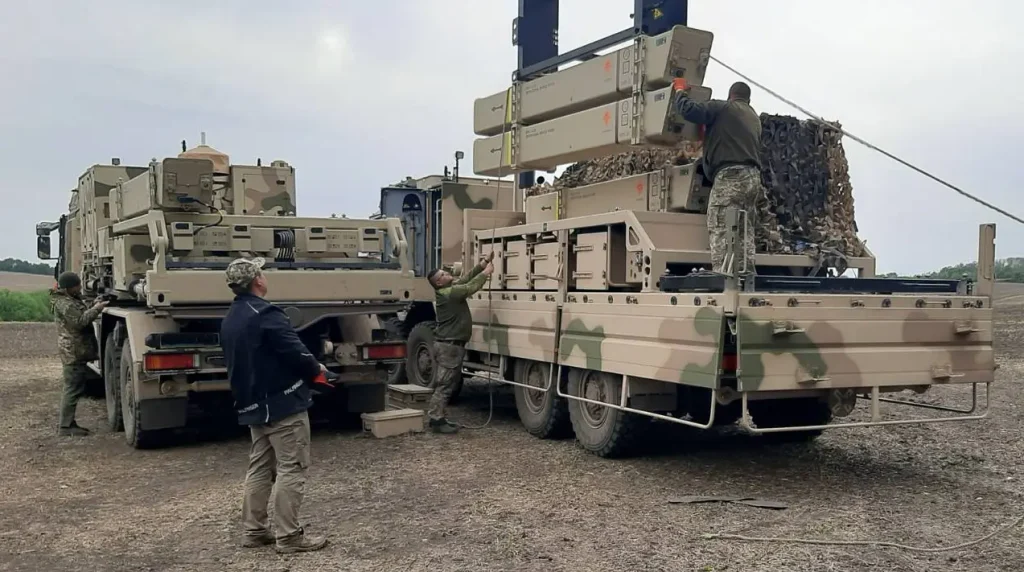
This is because two IRIS-T SLM fire units were already in production for Egypt, which had ordered a total of seven of this type before they were even pledged to be delivered to Ukraine.
Due to the urgent need of modern air defence systems in Ukraine, these were made available to Ukraine without further ado after an agreement was reached between the German and Egyptian governments and the manufacturer.
The first fire unit was delivered in October 2022, just about four months after the pledge was made public, while the second one followed in April 2023. Without this deal, Ukraine would have had to wait much longer, an additional year to be precise, for the air defence systems earmarked for them.
However, after intensive research, I am not aware of any quid pro quo as in the case of the S-300 delivery via Slovakia, which, of course, does not necessarily mean that there was no quid pro quo.
The Portuguese Leopard 2A6 MBTs
With the beginning of 2023, further red lines fell in Germany, such as the direct delivery of main battle tanks, which had previously only been provided via the Ringtausch programme.
In January 2023, Chancellor Olaf Scholz pledged to deliver a total of 14 Leopard 2A6 MBTs, while due to the lack of participation by other countries, this number was later increased to 18 Leopard 2A6 MBTs.
Due to the other pledges of 10 Stridsvagn 122 MBTs from Sweden and 3 Leopard 2A6 MBTs from Portugal, Germany could finally equip one of the two promised Ukrainian tank battalions with modern main battle tanks.
However, this very delivery of just three Portuguese Leopard 2A6 MBTs was linked to a number of problems and conditions.
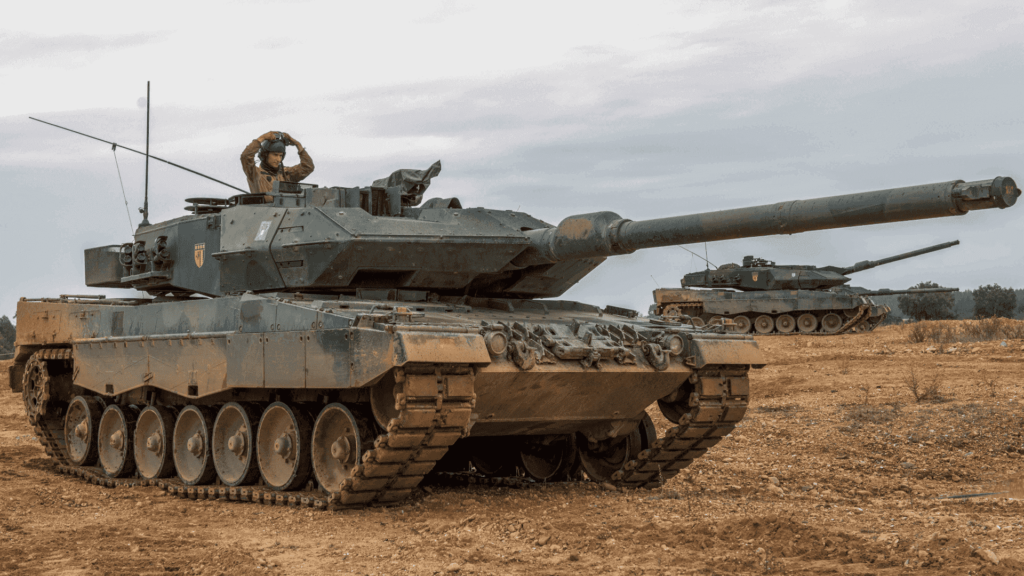
With reference to media reports about a statement by the former Portuguese Prime Minister António Costa, SPIEGEL reported in February 2023 that Portugal was committed to the delivery of main battle tanks, but was in talks with the German government about the maintenance of the remaining Leopard 2A6 in its inventory.
After all, Portugal’s defence capabilities must remain intact after the donation to Ukraine in order to be able to fulfil its NATO tasks, for example.
At least publicly, both Portuguese and German officials have never clearly stated that Portugal expected anything in return for the donation of Leopard 2A6 MBTs to Ukraine, but all indications, including an official document of the Portuguese Council of Ministers point to this.
The document, which was made public in December 2023, reveals that the German government offered assistance with the maintenance of the remaining Portuguese main battle tanks and sent a technical team from KMW (now KNDS Deutschland) to Portugal which assessed the fleet and identified its maintenance needs.
In subsequent meetings, which resulted in a letter of intent signed on the 28th of November 2023, both governments agreed that Germany would pay for the maintenance of the remaining 14 Leopard 2A6 MBTs in active service with the Portuguese army.
The costs for the work to be carried out in the coming years will amount to a total of €20 million, which will be covered by three payments — €10 million in 2024 and €5 million in each of the following years.
With this deal, it should be clear that the delivery of the Leopard 2A6 MBTs by Portugal to Ukraine was linked to the condition that Germany would provide a financial compensation, even if, of course, as it is so often in cases like this, it has not been officially confirmed.
Cheetah & Gepard SPAAGs from Jordan & Qatar
Just around two months after the beginning of Russia’s full-scale invasion of Ukraine, Germany’s then Minister of Defence, Christine Lambrecht, pledged the delivery of Gepard SPAAGs to Ukraine for the first time.
Initially smiled at by some, the Gepard SPAAG, which had already been decommissioned by the Bundeswehr years earlier, turned out to be an extremely effective weapon, especially in the fight against larger loitering munitions and reconnaissance drones.
Some even go so far as to say that until the arrival of the much more modern Skynex systems, which were also supplied by Germany, there was no system that was as cost-effective as the German predatory cat.
However, the biggest issue with the deliveries was the fact that firstly the system had been decommissioned by the Bundeswehr many years previously, and secondly, it was also no longer in production.
Accordingly, the German government had to become creative over time, as private companies were bought out of their stocks. In the end, they had no other choice left and bought up the stocks of other countries, certainly for a lot of money.
It all started with a deal between Germany and Qatar, which consisted of the hand-over of 15 Gepard SPAAGs to Germany, with subsequent delivery to Ukraine. These very systems were sold to Qatar just a year earlier to protect the FIFA World Cup.

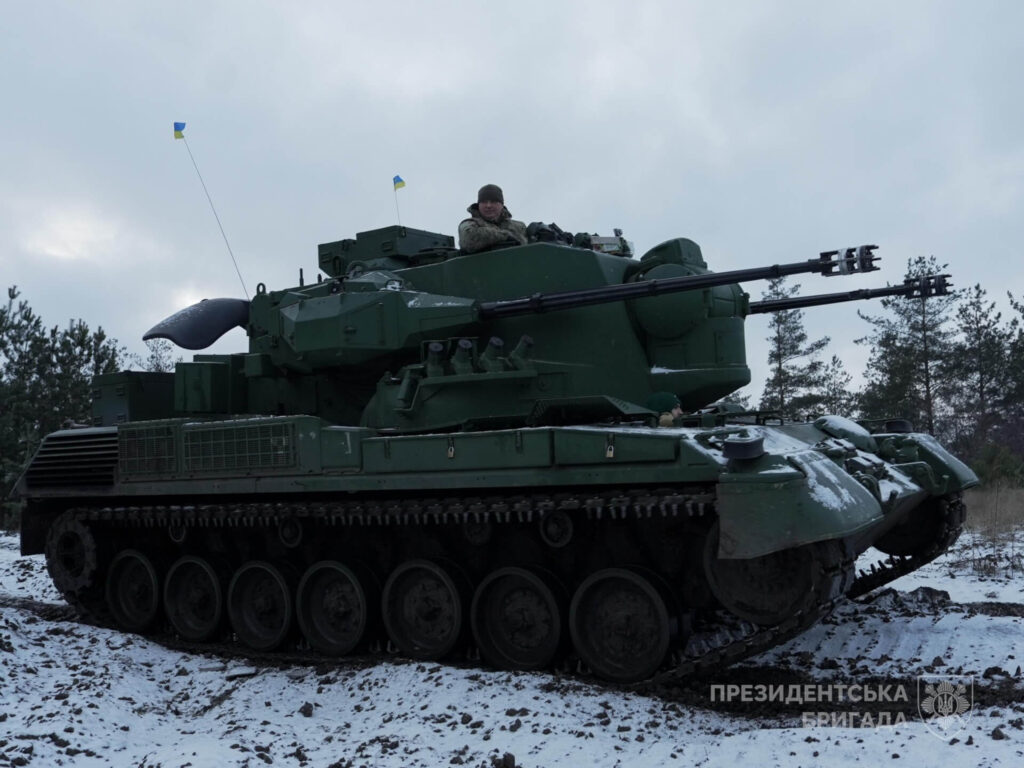
This was first reported by Business Insider, just two days after Germany pledged a to date historically high-value military aid package worth €2.7 billion.
According to the German newspaper, the 15 Gepard SPAAGs were part of the package and were mentioned in confidential information to the Bundestag but were not mentioned in the public press release.
This is said to be linked to the highly controversial human rights situation in Qatar. While there was more or less silence about this for the next few weeks, the discussions reignited in July.
On the 20th of July 2023, the Ukrainian Ambassador to Germany, Oleksii Makeiev, visited the Putlos military training site, where Ukrainian soldiers are being trained on the Gepard SPAAGs.
In the background of a 39-second long video statement that he shared on his X (formerly known as Twitter) account, one can see a sand-coloured Gepard SPAAG. A mistake that has now left no room for doubt.
Germany did actually buy back all of its 15 previously sold ones from Qatar. But even after this video was published, the German Ministry of Defence still refused to confirm the media reports about the situation.
Over time, they were repainted in classic green and fully delivered to Ukraine. There, the former Qatari systems can be easily recognised by the fact that they have a built-in air conditioning system.
There is also another deal with a different country, which was also concluded in 2023. However, as in the case of the deal with Qatar, the following information has never been officially confirmed by the German government, although everything points towards it being correct.
In June 2023, even before the delivery of the ex-Qatari Gepard SPAAGs to Ukraine was more or less officially confirmed by the videos and photos of the Ukrainian Ambassador to Germany, Major General Christian Freuding announced in an interview with WELT that, in addition to the 15 (ex-Qatari) Gepard SPAAGs, Germany would deliver another 30 by the end of the year in cooperation with the US.
Less than a month earlier, the Pentagon announced that a US company based in Florida had been contracted to procure Gepard SPAAGs worth around $118 million in Jordan.
These are actually Cheetah SPAAGs, of which the Netherlands sold 60 to Jordan years earlier. The Cheetah is a different version that differs both externally and internally from its German counterpart.
If you take Major General Christian Freuding’s statement together with the number of Cheetah SPAAGs available in Jordan and then consider that, as far as I know, no other sources were available at the time, it is more than likely that Germany is financing 15 Cheetah SPAAGs that were purchased by the US company in Jordan.
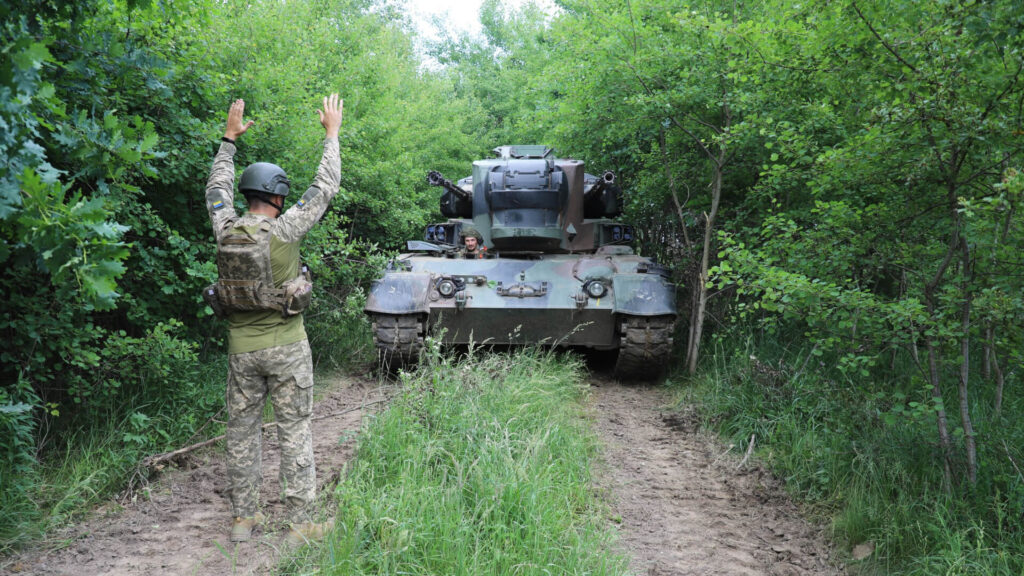
It is not known to what extent Germany was involved in the negotiations in Jordan, or if it was at all.
I can at least imagine, and what follows is really just my assumption, that the US government approached the German government about the deal and the future training of Ukrainian soldiers, and that during the talks it was agreed that Germany would finance part of the systems itself.
For some reason unknown to me, deliveries to Ukraine were delayed, at least officially. Ukraine only confirmed the deployment of the Cheetah SPAAGs in June 2024, although up to 30 of them were supposed to be delivered by Germany and the US by the beginning of January 2024.
Unofficially, however, videos and images that show these systems with Ukrainian soldiers in the depths of a winter suggest that at least some deliveries were carried out on time after all.
Modern self-propelled artillery from Qatar
I would like to finish this article, which has now become a little longer than expected, with the latest deal, which, although it was only concluded this year, has already been nearly fully realised.
At the beginning of September 2024, during a meeting of the Ukraine Defence Contact Group at the Ramstein Air Base in Germany, Minister of Defence Boris Pistorius surprisingly pledged to supply Ukraine with an additional 12 PzH 2000 self-propelled artillery systems.
The PzH 2000, which was supplied earlier not only by Germany, but also by Italy and the Netherlands, is currently one of the most modern and most effective self-propelled artillery systems in service in Ukraine. The excitement was therefore quite great, and certainly not only for me.
But what is the origin of these PzH 2000s? Minister Pistorius had already announced in his press statement that they would be supplied from industrial stocks for a total amount of €150 million.
Marcus Faber, Chairman of the Defence Committee of the German Bundestag, clarified on the same day to me on X (formerly known as Twitter) that these stocks don’t originate from the German Bundeswehr.

This eventually could only mean that some other country must have sold or handed over some or all of their PzH 2000s to the German industry.
An answer to the question of which country did it was revealed in mid-September in an BILD article, around two weeks after Pistorius announced the pledge.
The German newspaper wrote that the German government has given Qatar the green light to procure the most modern self-propelled artillery system in the world — the RCH 155 — in return for the delivery of 12 PzH 2000s to the German industry.
Interestingly, Pistorius announced at the time that these had already been contracted about six months ago, i.e. around March, which also explains why the German government had enough funds left over for the procurement of these artillery systems.
After all, it has been known for quite some time now that Germany no longer has any funds available in its federal budget for additional purchases.
While Major General Christian Freuding announced on YouTube back in August, i.e. even before the additional deliveries were announced, that 12 PzH 2000s would be delivered by the end of the year, Pistorius said about two weeks after the announcement during a visit to the artillery school in Idar-Oberstein that six would likely be delivered in the next eight weeks, suggesting that the remaining six systems will be delivered next year.
As of mid-December, however, the German government has already delivered 10 of the 12 pledged self-propelled artillery systems, so it is quite possible that all of them could end up in Ukraine before the end of the year.
In the meantime, we already got hold of the first visual evidence of the delivery of these artillery systems from a Ukrainian brigade which operates them.
On the 2nd of December, the 43rd Artillery Brigade published two images of a PzH 2000 which, in contrast to the previous deliveries from army stocks, is painted in classic dark green.
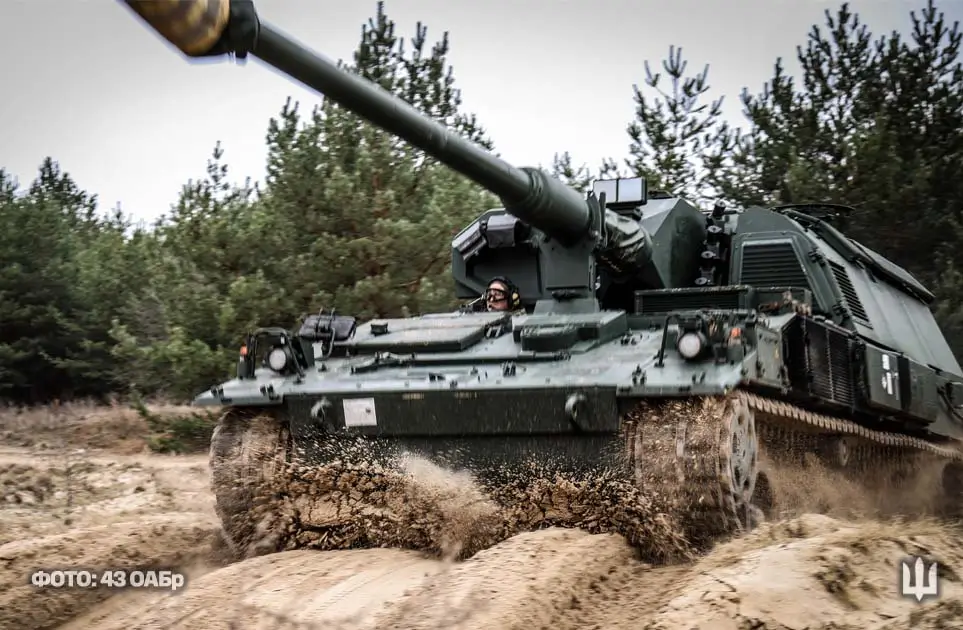
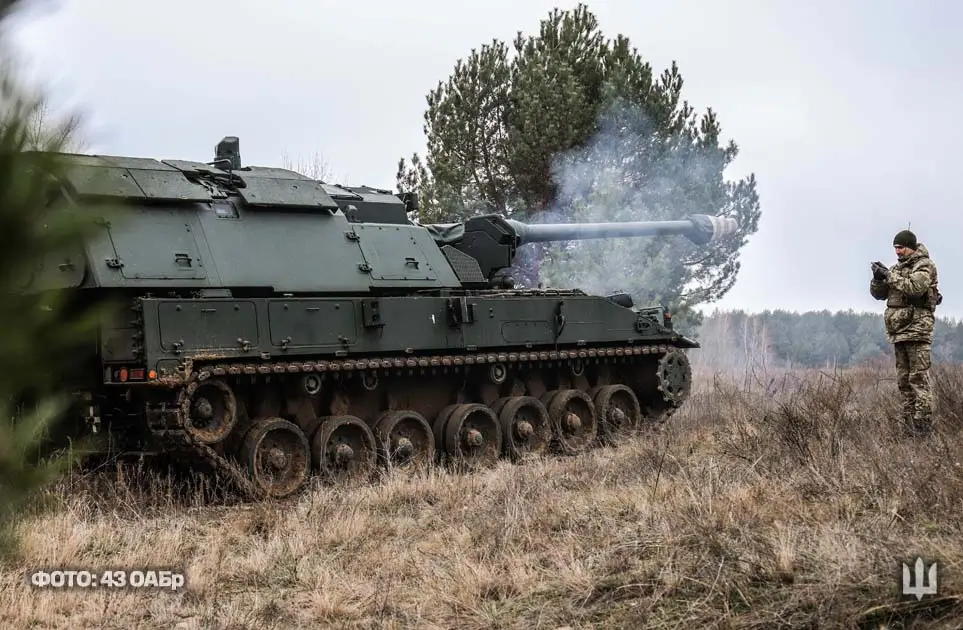
Earlier delivered systems from Germany, the Netherlands, and Italy all had the camouflage typical of the country of delivery. It is therefore more than likely that these images actually show one or two of the newly pledged and delivered PzH 2000s.
What can we learn from this?
Since we’ve reached the end of this article, I hope you now have a more profound understanding of what sometimes is actually going on in the background of deliveries like the ones I presented in my article.
In conclusion, I only have one more thing to say. Germany is being criticised a lot for not providing Ukraine with sufficient assistance. Some criticism is justified, some is not.
But one thing definitely cannot be denied. Germany is doing much more in the background than many would expect.
If you liked this post, consider following me on X, Bluesky, or Telegram. If you like, you can also leave me a tip on Ko-fi.


